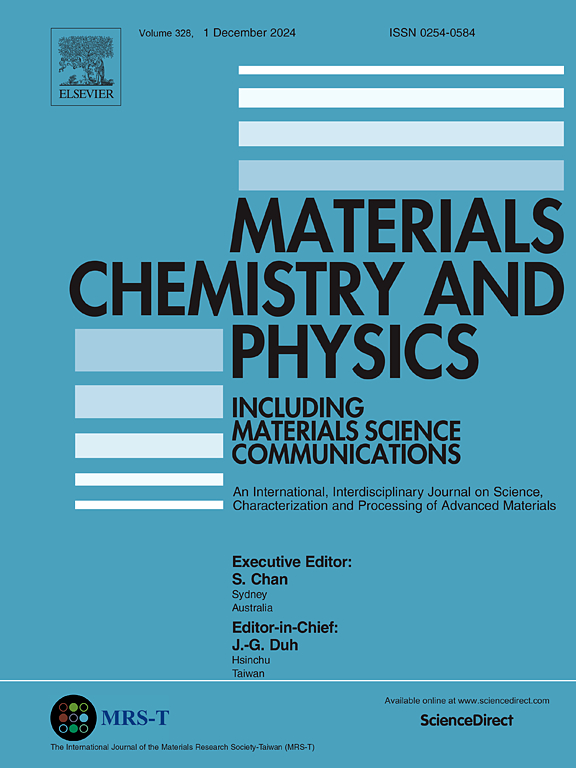Enhancing moist-heat resistance of cesium-doped tungsten bronze nanoparticles via ultrathin silica coating: A sol-gel approach for optimized near-infrared absorption
IF 4.3
3区 材料科学
Q2 MATERIALS SCIENCE, MULTIDISCIPLINARY
引用次数: 0
Abstract
Near-infrared (NIR) absorbing materials are widely used to enhance energy efficiency in window applications. Cesium-doped tungsten bronze (CsWO) nanoparticles, known for their strong NIR absorption, comprise metal oxides with tungsten having a reduced oxidation state (W5+) and intercalated Cs+. However, in humid environments, CsWO nanoparticles are susceptible to degradation due to the oxidation of W5+ and elution of Cs+, leading to decolorization and diminished NIR absorption. This study presents a simple and effective method for enhancing the stability of CsWO nanoparticles by coating them with ultrathin silica layers (CsWO/SiO2). The silica coating, applied via a sol-gel process, is optimized by controlling the concentrations of silicon alkoxide, base catalyst, water, and CsWO nanoparticles. The thickness of the silica layer, which can be precisely tuned at the nanoscale, depends on the reaction temperature. Notably, the single-nanometer-scale silica shell minimally affects the optical absorption properties of CsWO/SiO2 while mitigating light scattering associated with increased particle size. A 5 nm-thick silica shell significantly improves the resistance of CsWO nanoparticles to moist-heat conditions compared to uncoated CsWO. Furthermore, the degradation mechanism of CsWO/SiO2 under humid conditions is elucidated, highlighting the role of Cs+ elution and silica dissolution in the stability of coated nanoparticles.

求助全文
约1分钟内获得全文
求助全文
来源期刊

Materials Chemistry and Physics
工程技术-材料科学:综合
CiteScore
8.70
自引率
4.30%
发文量
1515
审稿时长
69 days
期刊介绍:
Materials Chemistry and Physics is devoted to short communications, full-length research papers and feature articles on interrelationships among structure, properties, processing and performance of materials. The Editors welcome manuscripts on thin films, surface and interface science, materials degradation and reliability, metallurgy, semiconductors and optoelectronic materials, fine ceramics, magnetics, superconductors, specialty polymers, nano-materials and composite materials.
 求助内容:
求助内容: 应助结果提醒方式:
应助结果提醒方式:


